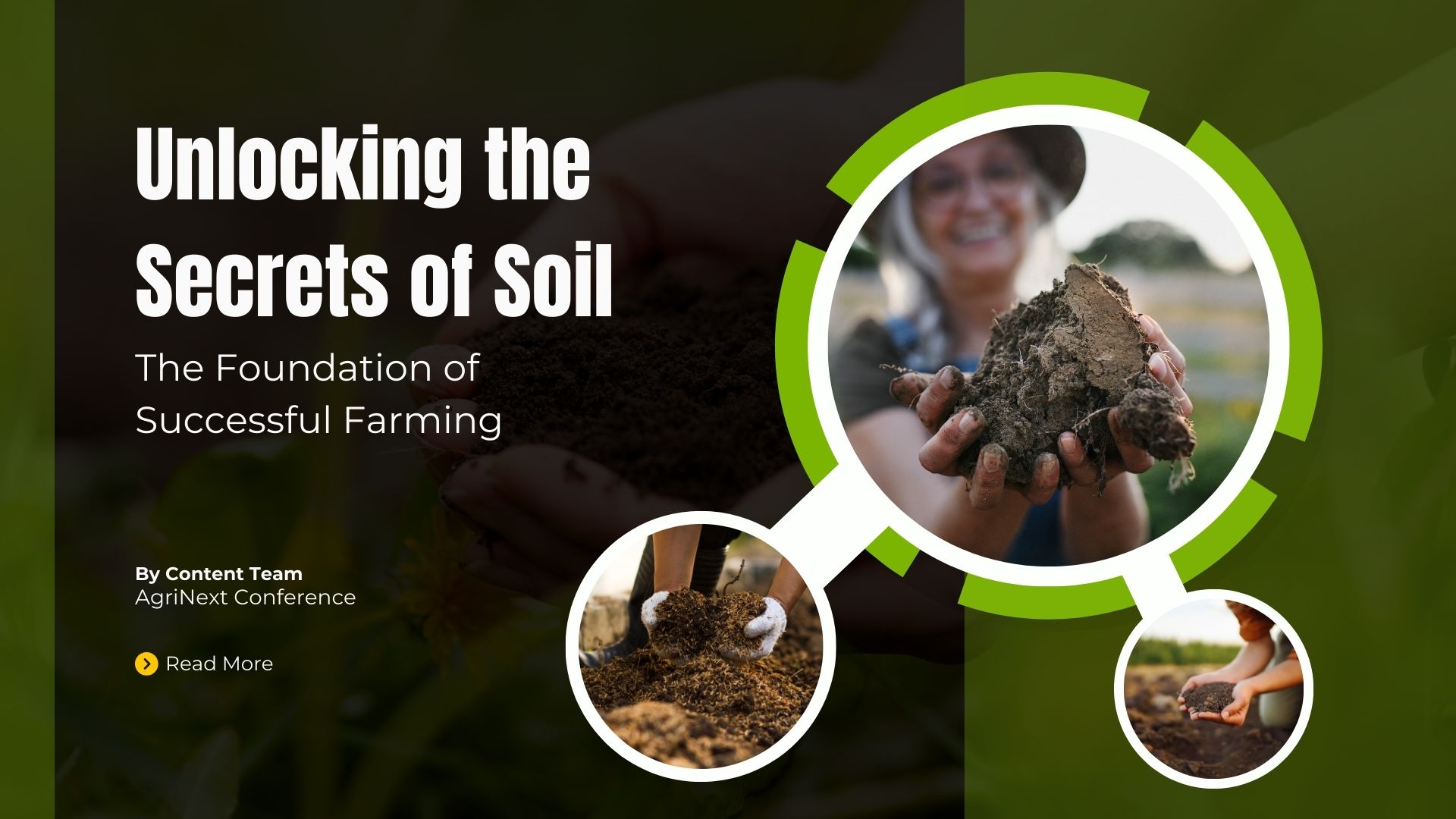
Be it deep or shallow, red or black, sand or clay, the soil is the link between the rock core of the earth and the living things on its surface. It is the foothold for the plants we grow. Therein lies the main reason for our interest in soils.
Roy W. Simonson, USDA Yearbook of Agriculture, 1957
Introduction
Soil is the foundation of agriculture, acting as the primary medium for plant growth and a vital resource for farmers. Understanding the different types of soil and their unique properties is crucial for optimizing crop production and ensuring sustainable farming practices. Each soil type has distinct characteristics that affect its water retention, nutrient availability, and suitability for various crops.
By identifying and managing these soil types, farmers can make informed decisions that enhance productivity and support long-term soil health. Soil types vary widely across different regions, supporting a diverse range of crops. While specific examples of regions and crops are often associated with each soil type, this blog will focus on the general characteristics and benefits of these soils, applicable in various environments worldwide, followed by innovative soil management techniques that are transforming modern agriculture.
Types of Soil
Sandy Soil
Characteristics: Sandy soil has large particles, which create large pores. It feels gritty and drains water quickly.
Benefits: Good drainage and easy to work with.
Challenges: Low nutrient retention and poor water-holding capacity. Frequent irrigation and fertilization are necessary.
Clay Soil
Characteristics: Clay soil consists of very small particles that pack tightly together, making it heavy and dense.
Benefits: High nutrient and water retention.
Challenges: Poor drainage and aeration. Tends to become waterlogged and hard to work with when dry.
Silt Soil
Characteristics: Silt particles are medium-sized, making the soil smooth to the touch. It retains water better than sandy soil but drains better than clay.
Benefits: Good nutrient retention and water-holding capacity.
Challenges: Can become compacted easily, leading to poor drainage and aeration.
Loamy Soil
Characteristics: A balanced mix of sand, silt, and clay. It is often considered the ideal soil for agriculture.
Benefits: Good drainage, aeration, and nutrient retention. Easy to work with and supports a wide variety of plants.
Challenges: Requires regular maintenance to maintain its balance.
Peaty Soil
Characteristics: High in organic matter and moisture. Dark and spongy texture.
Benefits: Good water retention and nutrient content. Ideal for growing acid-loving plants.
Challenges: Can be too acidic for some plants and may require pH adjustments.
Chalky Soil
Characteristics: Contains high levels of calcium carbonate or lime. Often stony and drains quickly.
Benefits: Suitable for plants that thrive in alkaline conditions.
Challenges: Poor nutrient retention and may require regular fertilization. Some plants may struggle with the high pH.
Saline Soil
Characteristics: High salt content, often found in arid regions.
Benefits: Few, as most plants struggle to grow in saline conditions.
Challenges: High salinity can inhibit plant growth. Requires special management practices, such as leaching and selecting salt-tolerant crops.
Soil Management
Soil management is crucial because it directly influences the productivity and sustainability of agricultural systems. Healthy soils provide essential nutrients, support water retention, and facilitate root growth, leading to robust crop yields. Moreover, effective soil management practices help prevent erosion, reduce the need for chemical inputs, and enhance biodiversity.
By maintaining soil health, we can ensure long-term food security, mitigate climate change through carbon sequestration, and protect vital ecosystems, ultimately supporting the overall well-being of our planet.
Soil Management Tips for Different Regions
Sandy Soil
Amend sandy soil with organic matter to enhance water retention, and apply mulch to retain moisture and reduce evaporation.
Clay Soil: Incorporate organic matter to improve drainage and aeration. Raised beds can help prevent waterlogging.
Silt Soil: Regular addition of organic matter to maintain structure. Ensure good drainage to prevent compaction.
Loamy Soil
Implement regular crop rotation to maintain optimal nutrient levels and apply balanced fertilization strategies to support diverse crop requirements, promoting soil health and fertility.
Peaty Soil
Maintain optimal soil pH through regular monitoring and adjustments, and utilize raised beds to ensure efficient drainage and aeration for healthy root growth.
Chalky Soil
Add organic matter and fertilizers to improve soil nutrient retention and balance.
Saline Soil
Use leaching and salt-tolerant crops to manage salinity.
Future Trends in Soil Management
Precision Agriculture: Utilizing GPS, drones, and soil sensors to monitor and manage soil health with high accuracy, leading to more efficient use of resources.
Regenerative Agriculture: Emphasizing practices that restore soil health, such as no-till farming, cover cropping, and agroforestry, to enhance biodiversity and carbon sequestration.
Biological Soil Amendments: Increasing use of bio-fertilizers and soil probiotics to improve soil fertility and support beneficial microbial activity.
Digital Soil Mapping: Advancing technologies for creating detailed soil maps that help farmers make informed decisions on soil management and crop selection.
Soil Carbon Sequestration: Growing interest in practices and technologies that capture and store carbon in soils, contributing to climate change mitigation efforts.
Integrated Soil Health Policies: Development of comprehensive policies and incentives by governments to promote sustainable soil management practices among farmers and landowners.
Innovative Soil Management Techniques
Biochar Application
Description: Biochar is a form of charcoal that is added to the soil. It improves soil health by increasing nutrient retention, enhancing soil structure, and promoting beneficial microbial activity.
Impact: Increases crop yields and sequesters carbon, contributing to climate change mitigation.
Example
A real example of biochar application is its use in rice paddies in Japan. Farmers in Japan add biochar to the soil to improve its fertility and water retention. This practice has led to increased rice yields and reduced methane emissions from the paddies, showcasing biochar’s benefits for both productivity and the environment.
Mycorrhizal Fungi
Description: These symbiotic fungi form relationships with plant roots, extending the root system and improving water and nutrient uptake.
Impact: Enhances plant growth, reduces fertilizer needs, and improves soil structure.
Example
A real-world example of mycorrhizal fungi application is in vineyards. In California, wine growers inoculate grapevine roots with mycorrhizal fungi to enhance nutrient uptake, particularly phosphorus. This symbiotic relationship leads to healthier vines, better grape yields, and improved wine quality.
Cover Cropping
Description: Planting cover crops like clover, rye, or alfalfa during off-seasons to protect and enrich the soil.
Impact: Prevents erosion, improves soil fertility, and enhances organic matter.
Conclusion
By understanding these soil types and their properties, farmers can make informed decisions about crop selection and soil management practices to optimize their yields and maintain soil health. Combining traditional knowledge with innovative techniques ensures sustainable and productive farming practices.
References
Food and Agriculture Organization of the United Nations (FAO)
United States Department of Agriculture (USDA)
International Soil Reference and Information Centre (ISRIC)
Journal of Soil and Water ConservationScienceDirect
AgriNext Awards, Conference & Expo: Pioneering Innovations in Agriculture
Join us at the AgriNext Awards Conference & Expo, where industry leaders and innovators gather to discuss the latest advancements in agriculture. From cutting-edge soil management techniques to sustainable farming practices, AgriNext is the premier event for anyone passionate about the future of agriculture. Don’t miss out on this opportunity to network, learn, and grow.
Signup For AgriNext Conference Newsletter


